Food Grain procurement by the government is the most important post-harvest agricultural activity in the country. The procurement for the government is done by the Food Corporation of India (FCI) with the help of State Agencies. What do the numbers tell us about food grain procurement by FCI?
In the earlier story on Food Cooperation of India (FCI), we explored the role of FCI in Food Grain procurement & ensuring Food Security. Along with the mandated objectives of FCI, its different functions like –procurement, storage, distribution etc. were also discussed.
In this story, we take a more detailed look at the procurement strategy followed by FCI along with related numbers of procurement and the stocks maintained.
Procurement Policy consists of Centralized and De-centralized procurement systems
The Government of India follows a procurement policy which is open-ended. As per this policy:
- Whatever Wheat and Paddy is offered by the farmers is purchased at Minimum Support Price (MSP) by State Government agencies and FCI for Central Pool.
- Farmers are required to sell it within the stipulated time period and confirm to any of the specification prescribed by Government of India (GoI)
- Farmed are not obliged to sell only the government and can sell outside as well in case they get a higher price than MSP.
This procurement of Wheat and Paddy is done via the following two systems:
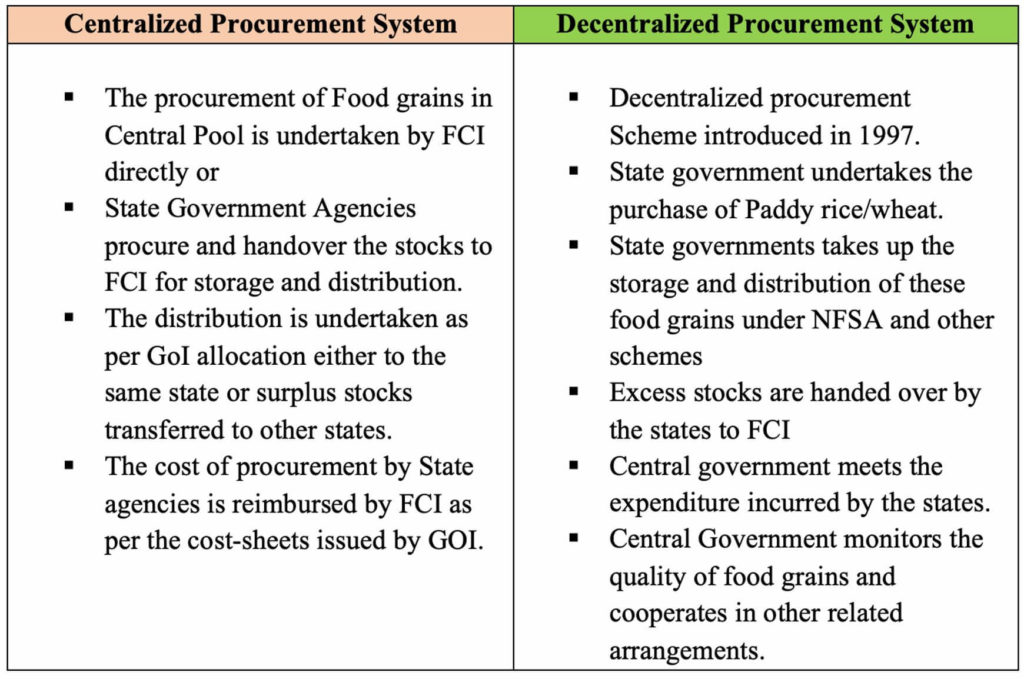
In few of the major Wheat and Paddy procuring states like Punjab, Haryana and in few parts of Rajasthan, FCI/State agencies procure the produce from the farmers via Commission Agents (Arhatiyas) as per the guidelines of respective State APMC acts. In few other states like Madhya Pradesh, Chhattisgarh, Andhra Pradesh, Bihar, Jharkhand, Odisha, West Bengal etc. the procurement is done via Co-operative societies also.
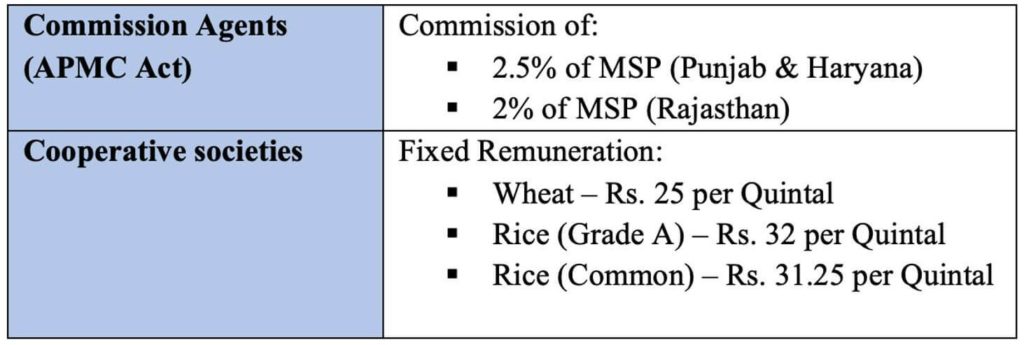
As for Coarse grains (like Jowar, Bajra, millet etc.), the procurement is done by State governments with consultation with FCI, so that the respective State Government may utilize them for distribution under National Food Security Act (NFSA) and other Welfare Schemes. This also provides them with the choice of preferred grains to procure.
States which have Decentralized Procurement System are called DCP states and they vary for Rice and Wheat.
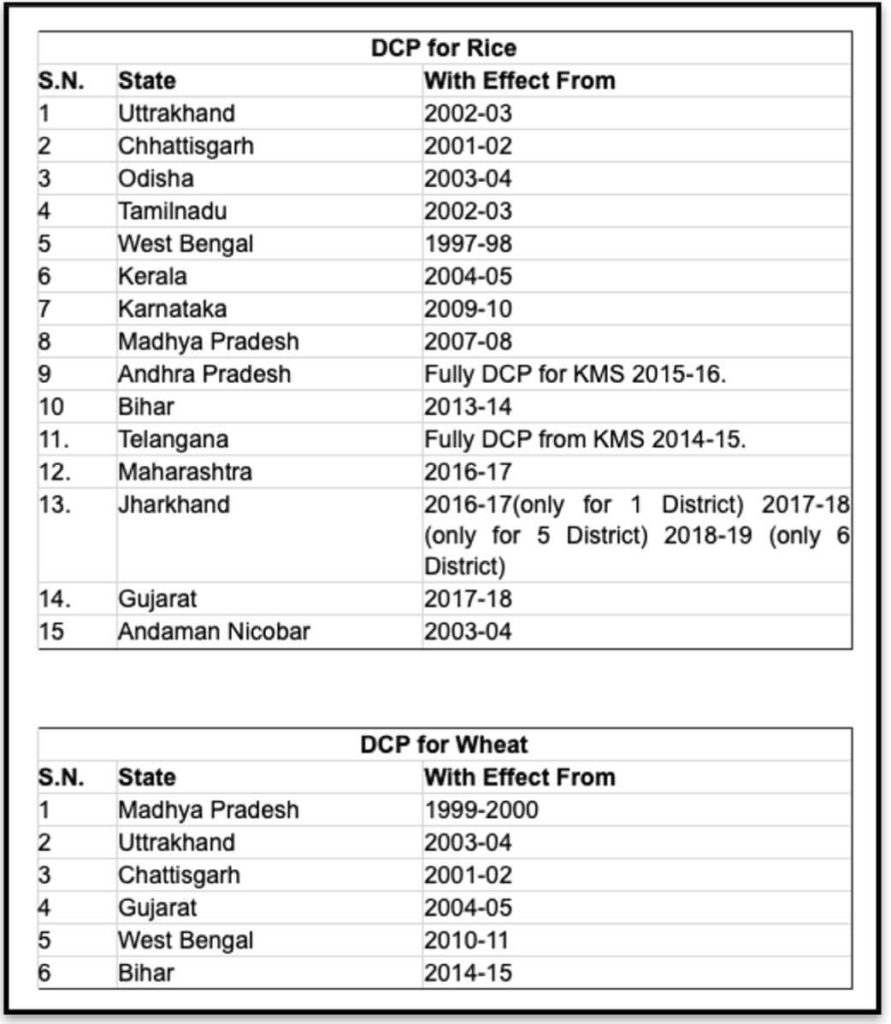
MSP trend over the last 10 years
The Government of India announces the Minimum Support Price (MSP) prior to every Kharif/Rabi season. This is done based on the recommendations of Commission of Agricultural Costs and Prices (CACP) reports which takes into consideration various factors to determine MSP.
For the Marketing Year 2011-12, the MSP for Paddy (Common) was Rs.1080 per Quintal (Qtl). With minor increase year on year, the MSP for Paddy for 2020-21 is fixed at Rs.1,868 per Qtl.
Similarly, the MSP for Paddy (Grade A) has also increased over the 10 years from Rs. 1110 per Qtl to Rs.1888 per Qtl.
MSP of Wheat also has increased from Rs. 1170 per Qtl in 2011-12 to Rs.1925 being offered as MSP in 2020-21. Comparatively Coarse grains had a higher increase in their MSP with more than two-fold increase for most of them over the 10-year period.

Procurement in the current Marketing Year among the highest for both Wheat and Rice
The current marketing season for Wheat is Rabi Marketing Season 2020-21. As per the information available on 03 June 2020, the total wheat procured in this season is 364.55 Lakh Metric Tons (LMT).
The procurement of wheat for the current season is still under progress, but it has already crossed the procurement of previous marketing season, which was 341.33 LMT. The highest procurement of Wheat in the last 10 years was in 2012-13 where in it was 381.48 LMT.
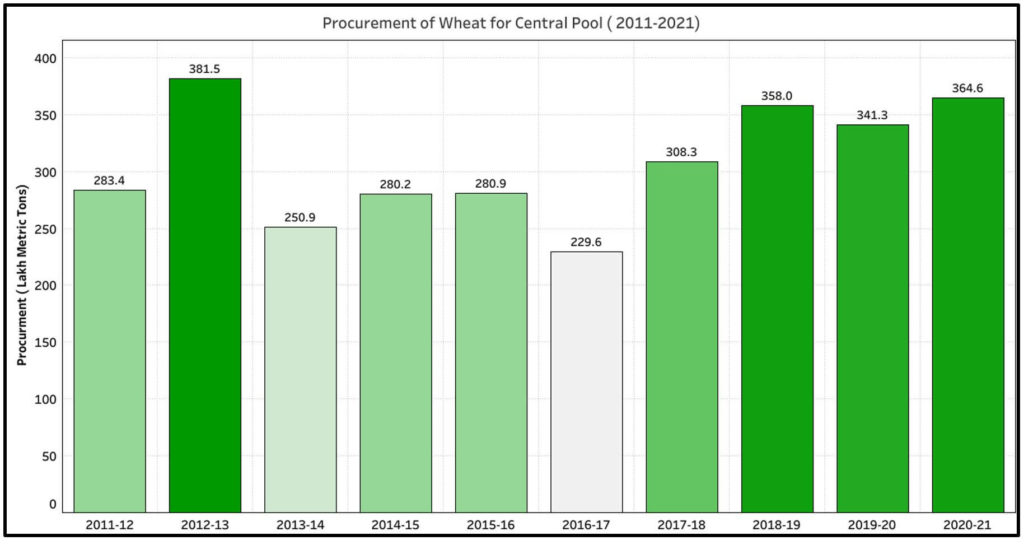
The latest season for Rice is the Kharif Marketing Season (KMS) 2019-20. The procurement of Rice to the Central Pool as on 03 June 2020 is 477.13 LMT.
This is the highest procurement of rice in the last ten years. The actual procurement for KMS 2019-20 of rice has exceeded the estimate for that marketing season, which was 416 LMT.
Since KMS 2013-14, the procurement of rice has consistently increased year on year.
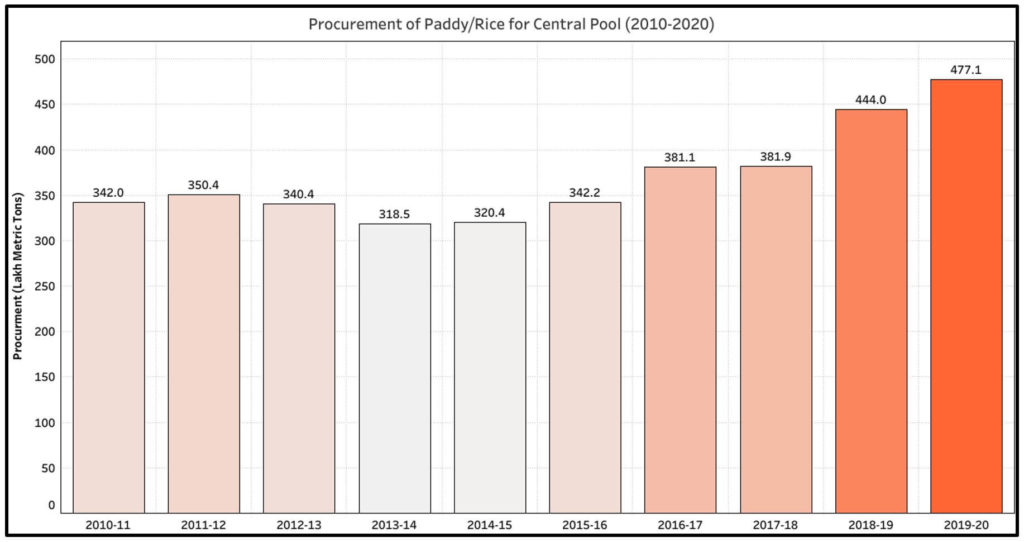
Major Share of procurement is done by State Agencies
As highlighted earlier, the procurement of food grains is done both by FCI as well as the state agencies. In the procurement done for the Central Pool, procurement by State Agencies is higher than that of the FCI. While the share of procurement by FCI for wheat has more or less remained the same, there has been a drastic fall of FCI’s procurement share in the case of Rice.
The share of procurement of wheat by State Agencies in 2014-15 was 87.39%, which increased to 89.28 % the next year, followed by a fall. Over the next three years, it hovered around 88%.
However, as per the latest numbers for the current season of 2020-21, the procurement by State agencies has increased to 91.14% , due to a fall in the volume of procurement by FCI.
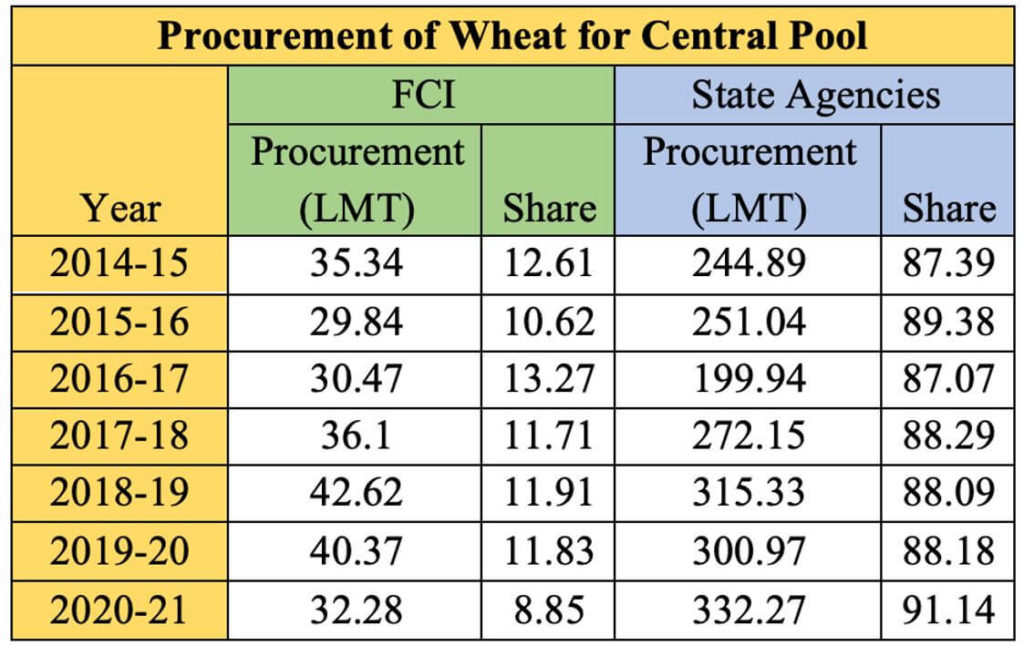
As for Rice, there has been a drastic fall in the procurement done through FCI. In the year 2013-14, the procurement through FCI to the central pool was 19%, which fell to 7.5% in the next year and continued to fall in the subsequent years. In fact, there is a considerable fall in the volume of procurement done by FCI, which has contributed to this falling share. In the year 2018-19, the share of procurement by FCI was 1.02 %, slightly better than previous year’s share of 0.41 %.
The main reason for this shift can be attributed to both the states of Telangana & Andhra Pradesh becoming DCP states during 2014-15 and 2015-16 respectively, wherein the procurement is now done by the state agencies rather than FCI. These two states are among the top producers of rice.
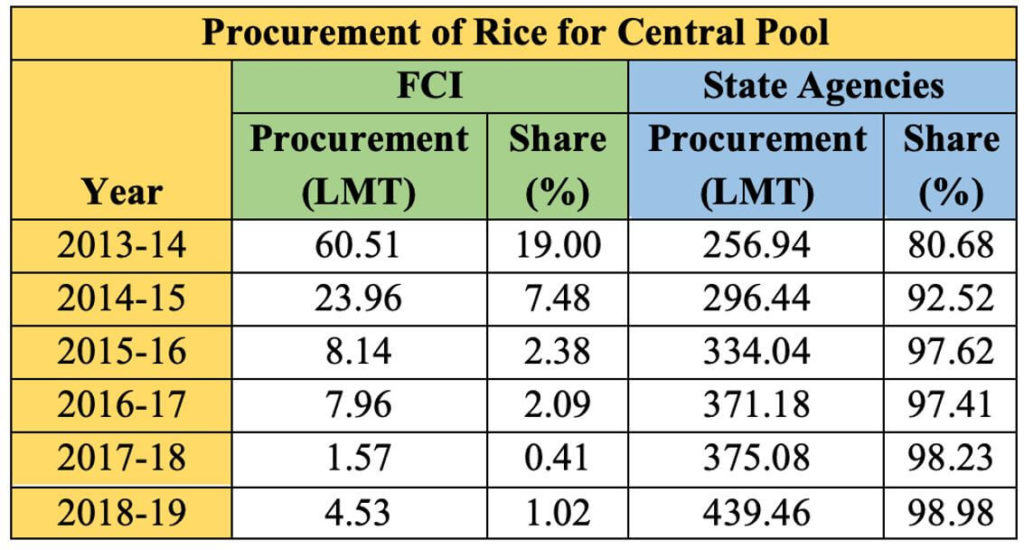
In the next story, we take a look at the procurement numbers as against the projected estimate as well the share in total production.
Featured Image: Food Grain procurement by FCI


